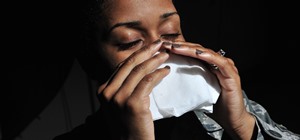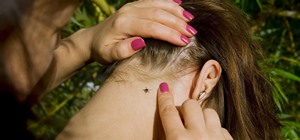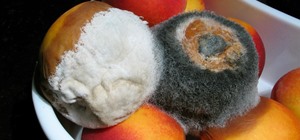A 'superbug' fungus is currently running riot in the hospitals of New York and New Jersey. This outbreak of Candida auris has contributed to 17 deaths in NYC, according to recent reports.
Candida auris was first discovered when it was cultured from the ear canal of a patient in Japan back in 2009.
Almost a decade later, the fungus has spread to more than a dozen countries. The Centers for Disease Control and Prevention (CDC) have described it as a "serious global health threat," because the fungus is resistant to many antibiotics usually used to treat these kinds of infections.
Paige Armstrong of the CDC agreed that Candida auris was "acting like a superbug," now that NYC and NJ hospitals are being hit.

The fungus gets into the bloodstream of sick patients — particularly in those who have had a central venous catheter placed in a vein — or people who were previously prescribed antibiotics or antifungal medication. Newborns and the elderly are particularly vulnerable. C. auris is also known to infect ears and wounds in general, and causes bloodstream infections, wound infections, and otitis.
C. auris is difficult to grow in the lab and it isn't easy to differentiate it from other Candida yeasts. Therefore, special molecular laboratory tests are the only way of identifying it. A study published in February of this year found that C. auris also forms biofilms, slimy biologic films that are really difficult to get rid of.
Biofilm-producing fungi like C. auris comprise of bacteria, microorganisms and organic and inorganic materials, stick together and accumulate within a slime layer. These slime deposits solidify on surfaces like medical equipment when nutrients and water are presents. They are difficult to get rid of and prevent, which explains the numerous hospital outbreaks in recent years.
During a CDC conference this week, experts detailed how researchers traveled to South America to investigate an outbreak in three Columbia cities. While there, they found that the fungus thrived on surfaces in hospital rooms and on the skin of nurses and patients who had been administered with antifungal medications.
So far, 66 cases have been reported in the US, the first reported in 2013. Of those, The Associated Press adds that there have been 44 cases reported in New York alone.

Seventeen of these NYC patients died as a result of the fungus infection, according to recent reports. The CDC have documented 15 cases in New Jersey as of March 2017, Illinois, 4, and there's been one case in Indiana, Maryland, and Massachusetts.
An antifungal Chlorhexidine was shown to inhibit the growth of this yeast, by disinfecting patients' wounds and thus prevent it from entering their bloodstream. However, Invisiverse previously noted that it is by no means a magic bullet.
The CDC urged medical professionals to take care while treating vulnerable patients by practicing hand hygiene while using gowns and gloves. In the case of infected patients, the CDC says that daily and "terminal cleaning" of their rooms with disinfectant recommended by the Environmental Protection Agency (EPA) is a must.
Just updated your iPhone? You'll find new emoji, enhanced security, podcast transcripts, Apple Cash virtual numbers, and other useful features. There are even new additions hidden within Safari. Find out what's new and changed on your iPhone with the iOS 17.4 update.




























Be the First to Comment
Share Your Thoughts